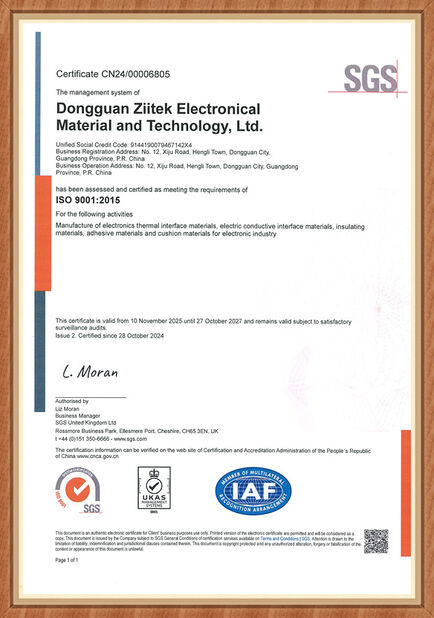What factors will affect the heat dissipation performance of thermal conductive phase change materials?
It is very important to know what factors affect the heat dissipation performance when selecting thermal conductive phase change materials. The following are several key performance indicators that affect the heat dissipation effect of thermally conductive phase change materials:
1. Phase transition temperature
Thermally conductive phase change materials will change from one physical state (such as solid) to another (such as liquid) at a specific temperature, which is called the phase transition temperature. The phase transition temperature should be selected to match the actual operating temperature range of the equipment being dissipated to ensure that the material can effectively absorb and release heat when needed.
2. Thermal conductivity
Thermal conductivity is an important index to measure the thermal conductivity of materials, indicating the proportion between the heat conduction amount per unit area in unit time and the temperature gradient. The higher the thermal conductivity, the stronger the ability of the material to conduct heat, the better the heat dissipation effect. Therefore, it is very important to select phase change materials with high thermal conductivity to improve the heat dissipation efficiency.
3. Thermal stability
Thermal stability refers to the ability of a material to keep its physical and chemical properties stable under high temperature environments. Thermally conductive phase change materials need to have good thermal stability to ensure that they do not fail or decompose under long-term high temperature working conditions, so as to ensure the long-term stable operation of equipment.
4. Latent heat of phase transition
Latent heat of phase change is the heat absorbed or released in the process of phase change, which is one of the unique properties of phase change materials. Materials with high latent heat of phase change can absorb more heat during phase transition without significantly increasing the temperature, which is very beneficial to control the operating temperature of the equipment.
5. Material form and application convenience
The form of thermally conductive phase change materials (such as sheets, gaskets, coatings, etc.) will affect their convenience and effect in practical applications. For example, the thin sheet material is easy to attach to the surface of the heating element, while the coating material can be uniformly covered on the heating surface by spraying. Selecting the material form suitable for the application needs is helpful to improve the heat dissipation effect and construction efficiency.
6. Environmental protection and sustainability
With the increasing awareness of environmental protection, the selection of environmentally friendly and sustainable thermally conductive phase change materials has also become an important consideration. These materials should meet the requirements of relevant environmental laws and regulations, and have little impact on the environment in the process of production, use and disposal.
To sum up, it is necessary to comprehensively consider phase change temperature, thermal conductivity, thermal stability, latent heat of phase change, material form and application convenience, environmental protection and sustainability and other performance indicators when selecting and purchasing thermal conductive phase change materials. Through scientific evaluation and reasonable selection, we can ensure the selection and purchase of thermal conductive phase change materials suitable for our own needs, so as to improve the heat dissipation effect and operation stability of the equipment.


 Your message must be between 20-3,000 characters!
Your message must be between 20-3,000 characters! Please check your E-mail!
Please check your E-mail!  Your message must be between 20-3,000 characters!
Your message must be between 20-3,000 characters! Please check your E-mail!
Please check your E-mail! 


